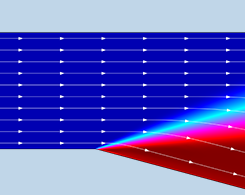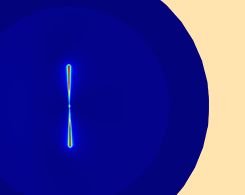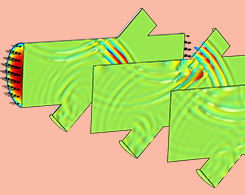Latest Posts

Efficiently Verify Electric Fields Outside Electrical Installations with Apps
Electrical installations are required to have their surrounding electric fields fall within certain levels. A simulation application can be used to verify measurements and adhere to standards.

How and When to Open Recovery Files in COMSOL Multiphysics®
If, by chance, the software shuts down before your simulation converges, just use the Open Recovery File feature to pick up where you left off and find your model’s solution.

Preventing Bubble Entrapment in Microfluidic Devices Using Simulation
Microfluidic devices are no match for bubbles. In fact, if bubbles become trapped in a microfluidic device, it could malfunction. Veryst Engineering created a CFD model to study this process.

Fat-Washing Cocktails on an Industrial Scale
Bacon-flavored vodka? Pecan-infused bourbon? The fat-washing process extracts the flavors from fat and dissolves it into alcohol, and it can even be scaled up to an industrial level.

Ensure Accurate Expansion Fan Results with a Benchmark Model
When a supersonic flow turns around a convex corner, it causes an expansion fan. You can analyze this phenomenon in COMSOL Multiphysics® with a validated benchmark.

How to Couple a Full-Wave Simulation to a Ray-Tracing Simulation
Learn how to couple full-wave and ray-tracing simulations in a model with a nonhomogenous domain around the antenna. Part 4 of a series on multiscale modeling in high-frequency electromagnetics.

Using the COMSOL Website Resources for Modeling and Software Help
The COMSOL website includes many helpful features and resources, including the COMSOL Blog (you’re on it right now), the Video Gallery, the Application Gallery, and more.

Using the Discontinuous Galerkin Method to Model Linear Ultrasound
You can easily model acoustically large problems, like linear ultrasound, with a predefined physics interface that uses a memory-efficient approach called the discontinuous Galerkin method.
